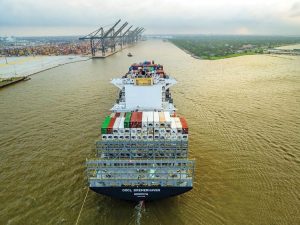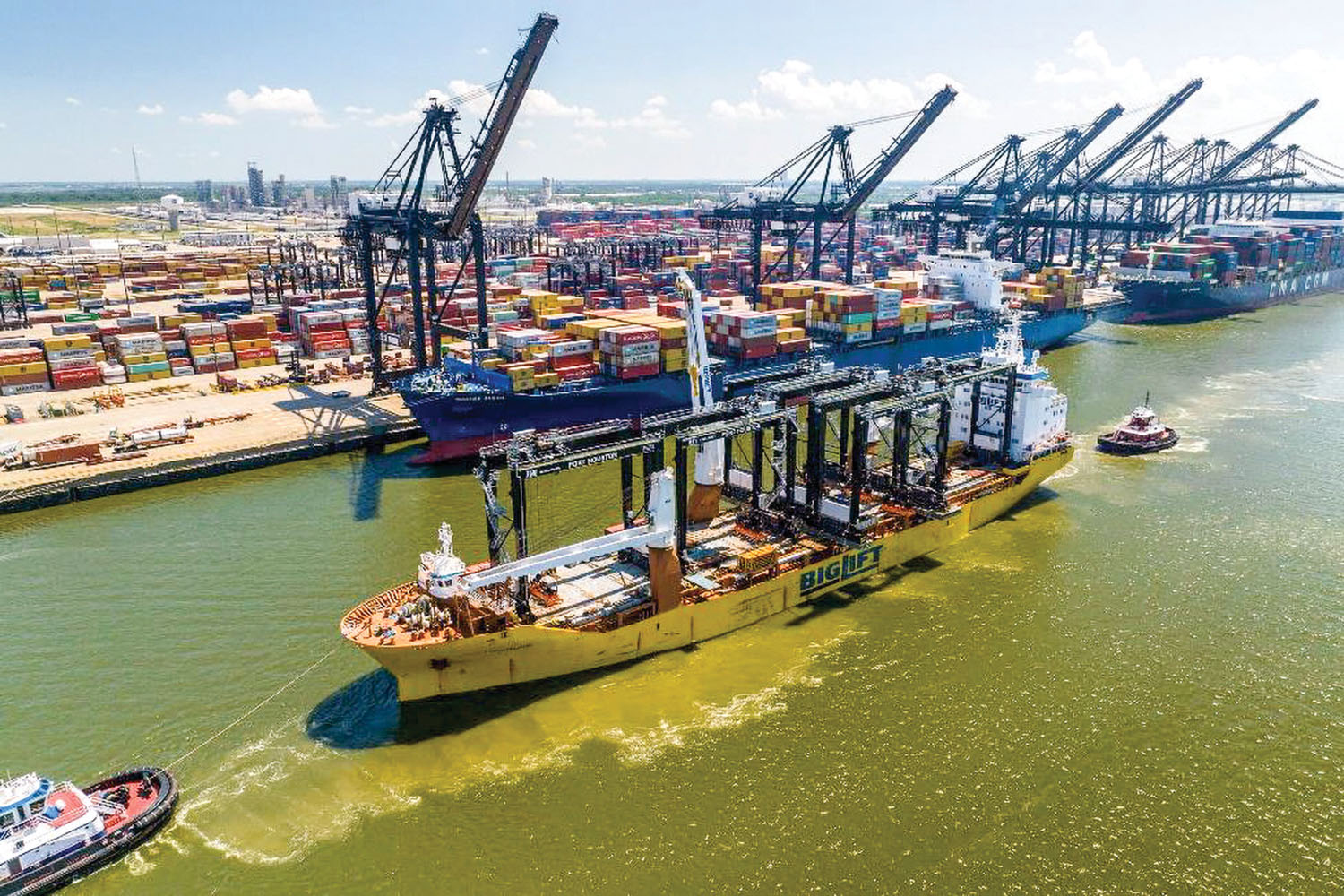Port Houston reported June 21 that it handled 364,866 twenty-foot equivalent units (TEUs) in May, marking an increase of 21 percent—or more than 64,000 TEUs—compared to the same month last year. From January through May, a total of 1,758,960 TEUs moved through the port’s two container terminals, reflecting a 14 percent increase compared to the same period in 2023.
Cargo volumes show no signs of slowing down despite any ongoing global supply chain disruptions, the port said in the announcement. Robust construction of new warehouses and distribution centers the last two years and regional consumer spending on items like furniture, hardware and retail goods have driven loaded import volumes to an increase of 18 percent in May compared to last year. In addition, strong manufacturing in Texas led to an increase in loaded exports, which were up by 21 percent in May, totaling 131,690 TEUs, and by 15 percent year-to-date, at 655,116 TEUs.
Also in May, Port Houston welcomed the MV/OOCL Bremerhaven on its maiden voyage. This vessel arrived at Bayport Container Terminal and is part of the ATG1/Victory Bridge service operated by the Ocean Alliance. The Victory Bridge connects Mexican imports from Veracruz and Altamira with a short transit time of four days and two days, respectively. After Houston, the service offers express direct service to Le Havre, Antwerp, Rotterdam and Bremerhaven before returning to Mexico.
“We give a Texas-sized welcome to the MV/OOCL Bremerhaven and look forward to providing this new vessel with exceptional customer service,” said Roger Guenther, executive director of Port Houston. “At Port Houston’s container terminals, vessels are worked 24 hours a day and are turned quickly in partnership with our stevedores and ILA labor. We understand the importance of getting ships in, out and on their way to their next destination as quickly and efficiently as possible.”
By the end of this year, 15,000-TEU-class neo-Panamax vessels will be able to berth at Bayport as the port continues to make progress on its Houston Ship Channel Expansion, widely known as Project 11.

“We are well-prepared to handle larger ships and increased volumes and ensure we always have a buffer for surges,” Guenther said. “Our goal is to continue to improve how we do business to capture increased cargo into the Houston region.”
Steel imports at Port Houston’s multipurpose facilities increased sharply in May, up 48 percent compared to the same month a year ago, totaling 436,027 short tons. This was the best month for steel imports at Port Houston since June 2023.
Total tonnage across all facilities has grown by 6 percent compared to last year and stands at 22,394,696 tons year-to-date.
New Cranes
The port announced on June 25 the arrival of six hybrid-electric, rubber-tired gantry (RTG) cranes, marking a significant milestone in its commitment to sustainability and operational efficiency. Including this most-recent delivery, Port Houston has acquired 26 new RTGs since December 2023, which have been deployed across its Barbours Cut and Bayport Container Terminals. The most recent delivery of these state-of-the-art cranes is the fourth of five total deliveries that the port will receive this year.
The acquisition of these hybrid-electric RTGs represents another step toward the port’s goal of carbon neutrality by 2050. Unlike conventional diesel-powered cranes, these hybrid models significantly reduce greenhouse gas emissions, noise pollution and fuel consumption. Compared to diesel models, the RTG cranes reduce NOx, PM, HC and CO emissions by 90 percent, the port said.
“We are excited to add these hybrid-electric RTGs to our fleet,” Guenther said. “This investment demonstrates our commitment to sustainable growth and our leadership in the maritime industry’s shift toward greener equipment. As we integrate advanced technology into our operations alongside our dedicated staff, stevedores and ILA labor, we are not only improving efficiency but also contributing to a healthier environment for our community.”
An additional batch of RTGs is expected to arrive by the fourth quarter of this year. By the end of this year, 57 of the port’s total 147 RTG cranes across both container terminals will be hybrid-electric.
Caption for photo: New RTGs delivered to Bayport Container Terminal. (Photo courtesy of Port Houston)




